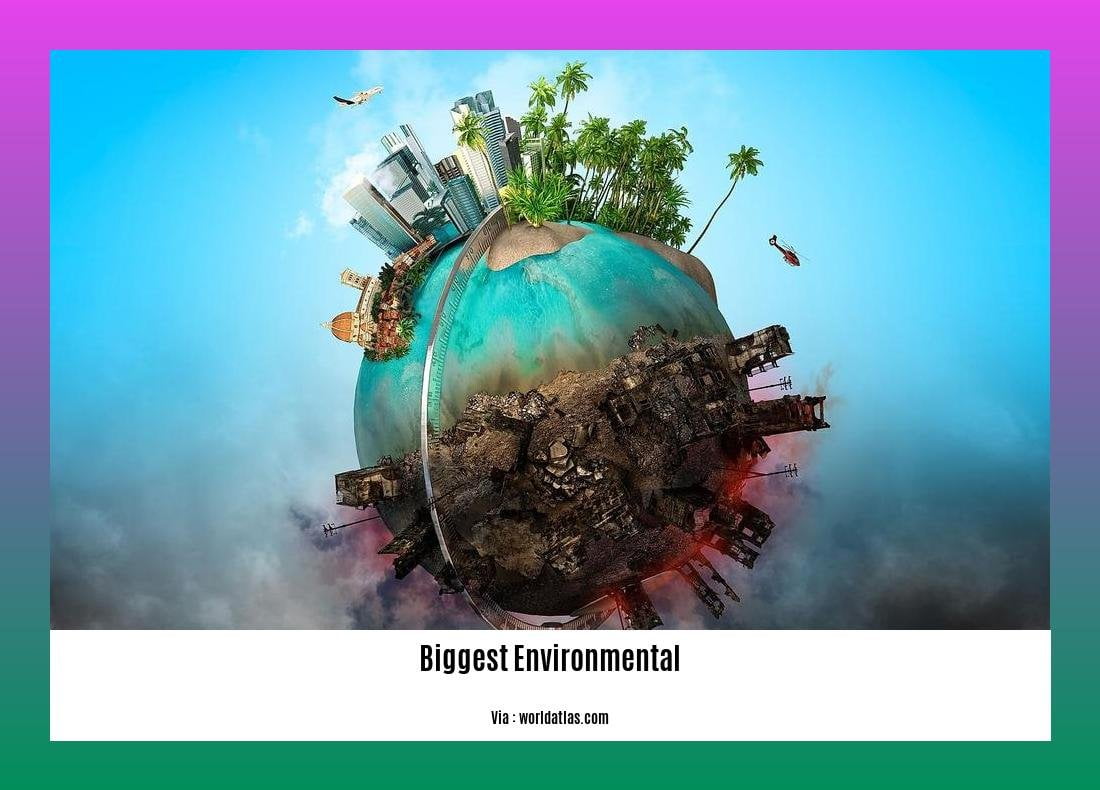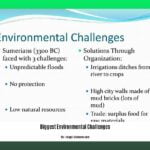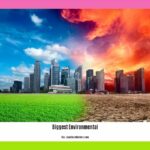Exploring the Urgent Challenges: Unveiling the Biggest Environmental Issues in the Philippines
In the vast archipelago of the Philippines, a nation brimming with natural wonders, there lie pressing environmental concerns that demand immediate attention. From the drastic deforestation taking place to the escalating plastic pollution crisis and the looming threat of water scarcity, the Philippines is confronted with significant environmental challenges. As an environmental journalist passionate about sustainability, my mission is to delve deep into these urgent issues, shedding light on their complexities and advocating for effective solutions. By amplifying the voices of impacted communities and forging partnerships with local environmental organizations, I strive to raise awareness and inspire positive change towards a more sustainable future for the Philippines.
Key Takeaways:
– The biggest environmental challenges in the Philippines include deforestation, plastic pollution, and water scarcity, particularly in marginalized communities.
– As an environmental journalist, the persona aims to shed light on these critical issues and advocate for effective solutions.
– The persona’s approach includes meticulous research, adept storytelling, and partnerships with local environmental organizations.
– By amplifying the voices of impacted communities, the persona hopes to inspire action and drive positive change towards a more sustainable future for the Philippines.
Exploring the Urgent Challenges: Unveiling the Biggest Environmental Issues in the Philippines
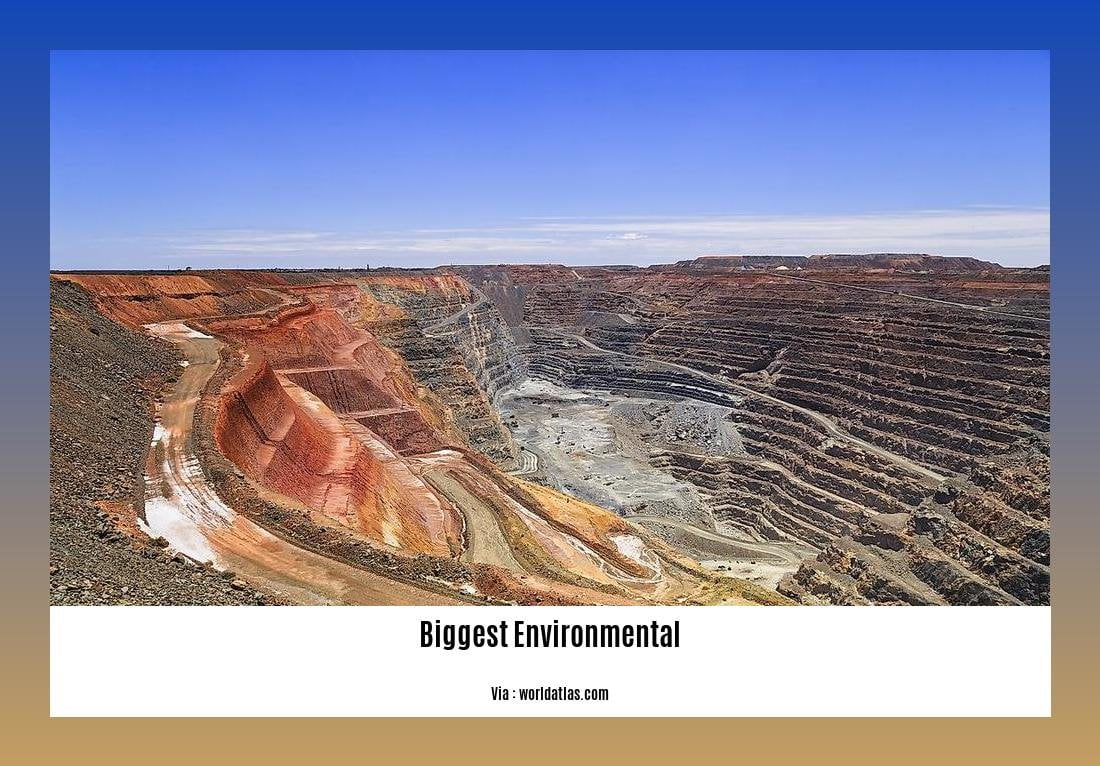
Deforestation: Stripping Away Nature’s Green Veil
Deforestation is one of the biggest environmental issues in the Philippines, posing a serious threat to the country’s biodiversity and ecological balance. The rampant clearing of forests for commercial purposes, agricultural expansion, and urbanization has led to irreversible damage to our ecosystems. The loss of forest cover disrupts carbon sequestration, accelerates climate change, and jeopardizes the habitats of numerous endemic species.
The consequences of deforestation are far-reaching. Our forests act as natural filters, purifying the air we breathe and regulating the water cycle. Without them, we face the risk of increased air pollution, decreased water quality, and exacerbated flooding. Not to mention the loss of livelihood for local communities dependent on forests for sustenance.
To address this urgent issue, it is crucial that we prioritize reforestation efforts and promote sustainable logging practices that strike a balance between economic development and environmental conservation. By partnering with local indigenous communities and organizations, we can restore our forests, preserve our biodiversity, and ensure a sustainable future for generations to come.
Plastic Pollution: Drowning in a Sea of Waste
Believe it or not, plastic pollution has become one of the biggest environmental issues plaguing the beautiful shores of the Philippines. Our once-pristine beaches are now marred by the sight of plastic waste, suffocating marine life and degrading coastal ecosystems.
Single-use plastics, such as plastic bags, straws, and bottles, have infiltrated every corner of our environment. They persist for hundreds of years, releasing toxic chemicals and breaking down into microplastics that enter our food chain. The implications for human health and marine biodiversity are alarming.
Tackling plastic pollution requires a multi-faceted approach. We must encourage the adoption of sustainable alternatives, promote recycling and waste management infrastructures, and implement strict regulations on single-use plastics. Each individual has a part to play in reducing plastic consumption, from saying no to straws to advocating for plastic-free alternatives in our communities.
Water Scarcity: A Thirsty Future
Water scarcity is a pressing environmental issue, particularly in marginalized communities across the Philippines. Access to clean and safe water is a basic human right, yet it remains a distant dream for many. Climate change and mismanagement of water resources exacerbate this problem, leaving communities vulnerable to drought and waterborne diseases.
Without adequate water supply, agriculture suffers, compromising food security and livelihoods. Furthermore, women and girls bear the burden of walking long distances to fetch water, depriving them of education and economic opportunities.
Addressing water scarcity requires a two-pronged approach: sustainable water resource management and equitable distribution. Investing in water infrastructure, rainwater harvesting systems, and proper wastewater treatment can help mitigate the effects of water scarcity. Additionally, empowering communities through education and access to technologies can ensure their resilience in the face of water challenges.
The biggest environmental issues in the Philippines demand urgent attention and concerted efforts from all stakeholders. As individuals, we can make conscious choices in our daily lives to reduce our ecological footprint. Collectively, we must hold policymakers accountable for implementing effective environmental policies and supporting innovative solutions. It is only through our collective action that we can secure a sustainable and thriving future for the Philippines.
Here is a list of the biggest environmental challenges, issues, and problems in the world:
-
biggest environmental challenges: Explore the pressing environmental challenges we face today, from climate change to deforestation and pollution.
-
biggest environmental issues: Discover the major environmental issues impacting our planet, including biodiversity loss, water scarcity, and air pollution.
-
biggest environmental issues in the world: Delve into the most significant environmental issues faced by our world today, ranging from plastic pollution to habitat destruction.
-
biggest environmental problems in the Philippines: Learn about the top environmental problems affecting the Philippines, from illegal logging to marine pollution and habitat degradation.
Take a deep dive into these crucial topics by clicking on the respective links above. Start exploring and understanding the challenges we must tackle for a better and sustainable future.
Water Scarcity and the Challenges Faced by Marginalized Communities
Water scarcity is a pressing environmental issue that affects many countries around the world, including the Philippines. This issue is particularly challenging for marginalized communities, such as those living in rural areas or urban slums. These communities face numerous difficulties in accessing safe and clean water for their daily needs, leading to various health problems and a reduced quality of life.
Marginalized communities in the Philippines bear the brunt of water scarcity due to several factors. Limited access to basic infrastructure, such as piped water supply systems and sanitation facilities, is a key challenge. Inadequate government policies and funding for water management and infrastructure development exacerbate the problem. The effects of water scarcity are further compounded by social and economic disparities, with marginalized communities lacking the resources and capacity to cope effectively.
The burden of fetching water falls disproportionately on women and children in these communities, impacting their education, livelihoods, and overall well-being. This unequal distribution of responsibilities perpetuates gender inequality and further hinders the development and progress of marginalized communities.
Efforts to address water scarcity and its impact on marginalized communities require a multi-faceted approach. Improving water governance, management, and infrastructure development are crucial steps in ensuring equitable access to water resources. Promoting community participation and empowering marginalized groups in decision-making processes also play a vital role.
Collaborative initiatives involving government agencies, NGOs, and local communities are essential in finding sustainable solutions. By working together, these stakeholders can develop innovative strategies to combat water scarcity and ensure the provision of clean and safe water for all.
While specific information on the challenges faced by marginalized communities in the Philippines regarding water scarcity is limited, it is crucial to recognize and address this pressing environmental and social concern. Further research, documentation, and advocacy are needed to shed light on this issue and develop effective measures to alleviate the hardships faced by these communities.
Key Takeaways:
– Water scarcity is a significant environmental issue in the Philippines, impacting marginalized communities the most.
– Limited access to infrastructure and inadequate government policies worsen the challenges faced by marginalized communities in relation to water scarcity.
– The burden of fetching water falls disproportionately on women and children, impacting their education, livelihoods, and overall well-being.
– Multi-faceted approaches, including improved water governance, infrastructure development, and community participation, are necessary to address water scarcity and its impact on marginalized communities.
– Collaborative initiatives involving government agencies, NGOs, and local communities are crucial in finding sustainable solutions.
Sources:
– Asian Development Bank. (n.d.). Water Sector Assessment: Philippines. Retrieved from Link
– United Nations Development Programme. (n.d.). Water scarcity, poverty and vulnerable groups in Asia and the Pacific: A companion paper to the Water Resource Policy Study. Retrieved from Link
Mining and its Detrimental Effects on the Environment
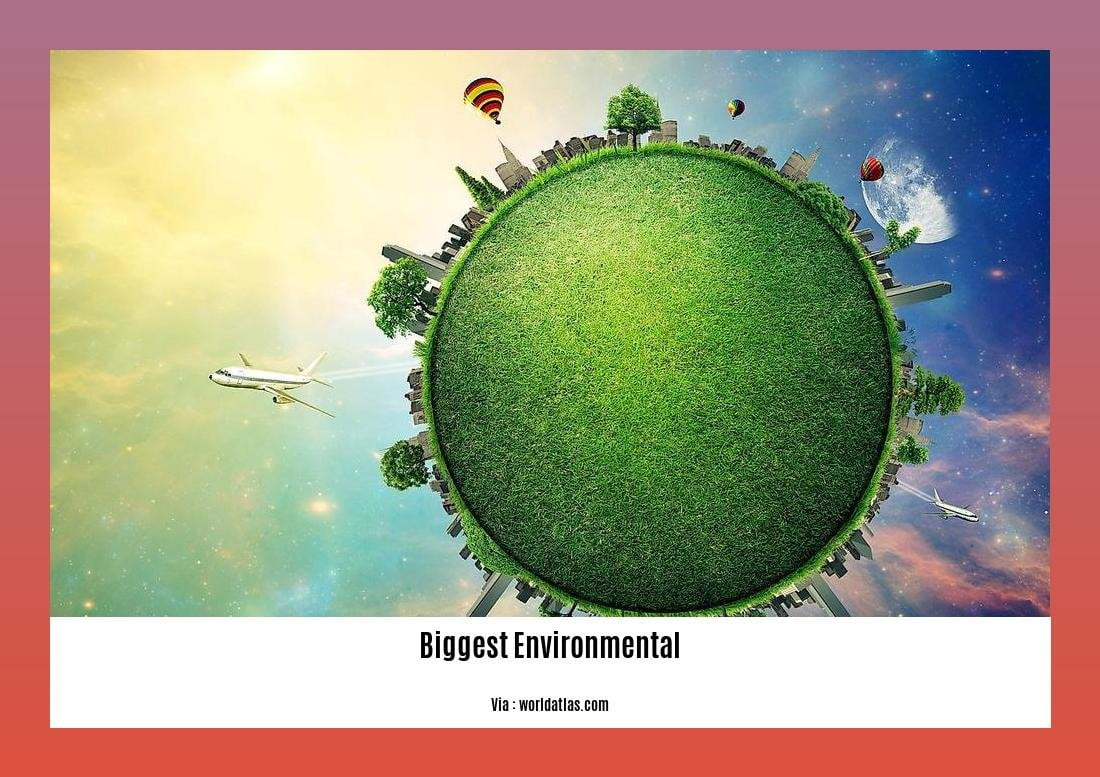
The Philippines is rich in natural resources, including mineral deposits that have attracted mining activities. However, mining comes at a cost, as it can have severe detrimental effects on the environment. In this article, we will explore the environmental challenges posed by mining in the Philippines and their far-reaching consequences.
Deforestation: A Widespread Consequence
Mining operations often require clearing vast areas of forests to access mineral deposits. This deforestation leads to the loss of crucial habitat for numerous plant and animal species, contributing to biodiversity loss. Additionally, the removal of trees disrupts the carbon cycle, leading to increased greenhouse gas emissions and exacerbating climate change.
Soil Degradation and Erosion
Mining activities also bring about soil degradation and erosion. The disruption of natural soil composition and structure can result in erosion and reduced soil fertility. This degradation not only affects agricultural productivity but also poses a threat to nearby ecosystems.
Pollution and Contamination
Mining processes release various pollutants into the air and water bodies, causing pollution and environmental contamination. Heavy metals, acids, and toxic chemicals are commonly released during mining activities, posing risks to aquatic life, contaminating local water sources, and contributing to air pollution and associated health issues.
Land Subsidence and Structural Damage
Certain mining techniques, such as underground mining, can cause land subsidence. Land subsidence occurs when underground mines collapse or when the removal of minerals leads to the ground sinking. This can result in structural damage to buildings and infrastructure, posing risks to communities living in mining areas.
Displacement of Communities and Social Disruption
Large-scale mining operations often require the resettlement or displacement of local communities and indigenous peoples. This displacement can lead to social disruption, loss of livelihoods, and the erosion of cultural heritage. The affected communities often struggle to adapt to their new environments and face challenges in accessing basic services and resources.
Acid Mine Drainage
When minerals and rocks containing sulfur are exposed to air and water during mining, the process of acid mine drainage occurs. This leads to the formation of acidic water, which can severely harm aquatic ecosystems and contaminate water sources. Acid mine drainage poses additional threats to the already vulnerable local communities and their access to clean water.
Waste Disposal and Environmental Contamination
Mining generates significant amounts of waste materials, such as tailings. Improper management of these waste materials can result in toxic leaks and environmental contamination, affecting nearby ecosystems and communities. Proper waste disposal practices and monitoring are crucial to minimize the environmental impact of mining operations.
Contributing to Climate Change
Mining activities contribute to greenhouse gas emissions, primarily through the use of fossil fuels in mining machinery and transportation. These emissions further contribute to global warming and climate change, exacerbating the environmental challenges already faced by the Philippines.
Key Takeaways:
– Mining in the Philippines has detrimental effects on the environment, including deforestation, soil degradation, pollution, and contamination.
– Land subsidence and structural damage pose risks to communities in mining areas.
– Displacement of communities and social disruption are frequent consequences of large-scale mining operations.
– Acid mine drainage and improper waste disposal contribute to water contamination and environmental degradation.
– Mining activities contribute to climate change through greenhouse gas emissions.
Sources:
– World Wildlife Fund – Mining and the Environment
– United Nations Environment Programme – Extractive Industries
Air Pollution and Its Impact on Public Health
Air pollution has emerged as one of the biggest environmental challenges in the Philippines, with severe consequences for public health. The harmful pollutants released into the air not only degrade the quality of the environment but also directly impact human well-being. In this article, we will dive into the detrimental effects of air pollution on public health in the Philippines.
The Invisible Enemy: Understanding Air Pollution
Air pollution refers to the presence of harmful substances in the air, resulting from human activities such as industrial emissions, vehicle exhaust, and the burning of fossil fuels. These pollutants include particulate matter (PM), nitrogen dioxide (NO2), sulfur dioxide (SO2), and volatile organic compounds (VOCs).
The Philippines, being a rapidly industrializing country, faces significant challenges in managing and mitigating air pollution. The concentration of these pollutants in the air has reached alarming levels, posing substantial risks to the health and well-being of the Filipino population.
The Devastating Impact on Public Health
Air pollution has a direct impact on public health, causing a wide range of respiratory and cardiovascular diseases. Prolonged exposure to pollutants in the air can lead to:
-
Respiratory Disorders: The inhalation of polluted air can result in respiratory problems such as asthma, bronchitis, and other chronic obstructive pulmonary diseases (COPD). Fine particulate matter, or PM2.5, which is smaller than 2.5 micrometers in diameter, can penetrate deep into the lungs, causing inflammation and long-term damage.
-
Cardiovascular Complications: Air pollution has been linked to increased risks of heart attacks, strokes, and other cardiovascular diseases. The fine particles and gases present in polluted air can enter the bloodstream, leading to the formation of blood clots, inflammation, and hardening of the arteries.
-
Premature Mortality: The long-term exposure to air pollution has been associated with premature death, particularly in vulnerable populations such as the elderly and those with pre-existing health conditions.
The Disproportionate Burden on Vulnerable Communities
While air pollution affects people across all demographics, it has a disproportionate impact on marginalized communities in the Philippines. Residents of urban slums and impoverished rural areas face higher exposure to air pollutants due to factors such as limited access to healthcare, inadequate housing, and proximity to industrial zones and heavily congested roads.
These communities often lack the resources and infrastructure needed to mitigate the effects of air pollution and protect their health. The burden of respiratory and cardiovascular diseases falls heavily on these vulnerable populations, exacerbating existing inequalities in healthcare access and quality of life.
Taking Action for a Breathable Future
Addressing air pollution and its impact on public health requires a comprehensive approach involving individuals, communities, and government initiatives. Here are key strategies and measures that can help tackle this urgent issue:
-
Reducing Emissions: Implementing stricter regulations and standards for industrial emissions, vehicle emissions, and coal-burning power plants can significantly reduce the release of harmful pollutants into the air.
-
Promoting Clean Energy: Shifting towards renewable energy sources such as solar and wind power can reduce reliance on fossil fuels and mitigate air pollution.
-
Improving Urban Planning: Designing cities with an emphasis on green spaces, pedestrian-friendly infrastructure, and efficient public transportation can minimize traffic congestion and improve air quality.
-
Raising Awareness: Educating the public about the health risks associated with air pollution and promoting individual actions such as reducing vehicle emissions, using energy-efficient appliances, and practicing sustainable lifestyle choices.
-
Monitoring and Research: Enhancing air quality monitoring systems and investing in research on the sources and impacts of air pollution can provide crucial data for targeted interventions and policy-making.
Key Takeaways:
-
Air pollution poses a significant threat to public health in the Philippines, leading to respiratory and cardiovascular diseases, premature mortality, and exacerbating inequalities in marginalized communities.
-
Particulate matter (PM), nitrogen dioxide (NO2), sulfur dioxide (SO2), and volatile organic compounds (VOCs) are common pollutants that contribute to air pollution.
-
Long-term exposure to air pollution can result in respiratory disorders such as asthma and chronic obstructive pulmonary diseases (COPD) and increase the risk of heart attacks, strokes, and premature death.
-
Marginalized communities face a disproportionate burden due to limited resources and higher exposure to pollutants.
-
Addressing air pollution requires reducing emissions, promoting clean energy, improving urban planning, raising awareness, and investing in monitoring and research.
Sources:
- World Health Organization – Air Pollution and Health
- Clean Air Asia – Philippines
FAQ
Q1: What are the biggest environmental issues in the Philippines?
A1: The biggest environmental issues in the Philippines include deforestation, plastic pollution, and water scarcity, especially in marginalized communities.
Q2: How does deforestation contribute to environmental challenges in the Philippines?
A2: Deforestation in the Philippines leads to habitat loss, destruction of biodiversity, and soil erosion, causing negative impacts on ecosystems and agriculture.
Q3: What are the consequences of plastic pollution in the Philippines?
A3: Plastic pollution in the Philippines results in the contamination of water bodies, harm to marine life, and the accumulation of plastic waste in coastal areas and natural habitats.
Q4: How does water scarcity affect marginalized communities in the Philippines?
A4: Water scarcity disproportionately affects marginalized communities, leading to limited access to safe and clean water, health problems, and reduced quality of life.
Q5: What are the potential solutions for addressing the environmental challenges in the Philippines?
A5: Potential solutions for addressing the environmental challenges in the Philippines include improving water governance, enhancing infrastructure development, promoting community participation, and ensuring equitable access to water resources.
